![]()
 Help your child develop healthy habits early in life that will bring lifelong benefits. As you gain practical tips on helping your kids eat nutritious meals and enjoy a physically active lifestyle, be sure to apply these same behaviors to your own life. The best way to lead your child to a healthy lifestyle is to set a positive example yourself.
Help your child develop healthy habits early in life that will bring lifelong benefits. As you gain practical tips on helping your kids eat nutritious meals and enjoy a physically active lifestyle, be sure to apply these same behaviors to your own life. The best way to lead your child to a healthy lifestyle is to set a positive example yourself.
Tag: wellness
Preventing Heart Disease – At Any Age
 You’re never too young— or too old — to take care of your heart.
You’re never too young— or too old — to take care of your heart.
Preventing heart disease (and all cardiovascular diseases) means making smart choices now that will pay off the rest of your life.
Lack of exercise, a poor diet and other bad habits can take their toll over the years. Anyone at any age can benefit from simple steps to keep their heart healthy during each decade of life. Here’s how:
No matter what your age, everyone can benefit from a healthy diet and adequate physical activity.
- Choose a healthy eating plan. The food you eat can decrease your risk of heart disease and stroke. Choose foods low in saturated fat, trans fat, cholesterol, sodium and added sugars and sweeteners. As part of a healthy diet, eat plenty of fruits and vegetables, fiber-rich whole grains, fish (preferably oily fish — at least twice per week), nuts, legumes and seeds. Also try eating some meals without meat. Select fat-free and low-fat dairy products and lean meats and poultry (skinless). Limit sugar-sweetened beverages.
- Be physically active. You can slowly work up to at least 2½ hours (150 minutes) of moderate-intensity aerobic physical activity (like brisk walking) every week or an hour and 15 minutes (75 minutes) of vigorous intensity aerobic physical activity (such as jogging or running) or a combination of both every week. Additionally, on two or more days a week you need muscle-strengthening activities that work all major muscle groups (legs, hips, back, abdomen, chest shoulders and arms).
A Secret to Healthy Aging
 With its emphasis on fresh fruits, vegetables, whole grains, and healthy fats, the Mediterranean diet is one of the healthiest ways in the world to eat. Plus, it’s delicious, so you’ll want to stick with it.
With its emphasis on fresh fruits, vegetables, whole grains, and healthy fats, the Mediterranean diet is one of the healthiest ways in the world to eat. Plus, it’s delicious, so you’ll want to stick with it.
The Mediterranean diet has been linked to better heart health and greater longevity. Experts recommend:
- Ban butter. Switch to unsaturated olive oil for cooking, and use olive oil for salad dressings. Vegetable oils such as canola and grape seed are also healthy.
- Switch to fish. Twice a week, substitute a serving of salmon, herring, or albacore tuna for red meat.
- Load up on veggies. Leave more room on your plate for vegetables like broccoli, kale, carrots, and tomatoes. Grill or steam them, or serve them raw, instead of frying.
Healthy Eating Tip: Set yourself up for success
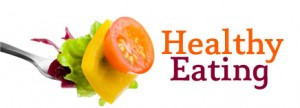 To set yourself up for success, think about planning a healthy diet as a number of small, manageable steps rather than one big drastic change. If you approach the changes gradually and with commitment, you will have a healthy diet sooner than you think.
To set yourself up for success, think about planning a healthy diet as a number of small, manageable steps rather than one big drastic change. If you approach the changes gradually and with commitment, you will have a healthy diet sooner than you think.
- Simplify. Instead of being overly concerned with counting calories or measuring portion sizes, think of your diet in terms of color, variety, and freshness. This way it should be easier to make healthy choices. Focus on finding foods you love and easy recipes that incorporate a few fresh ingredients. Gradually, your diet will become healthier and more delicious.
- Start slow and make changes to your eating habits over time. Trying to make your diet healthy overnight isn’t realistic or smart. Changing everything at once usually leads to cheating or giving up on your new eating plan. Make small steps, like adding a salad (full of different color vegetables) to your diet once a day or switching from butter to olive oil when cooking. As your small changes become habit, you can continue to add more healthy choices to your diet.
- Every change you make to improve your diet matters. You don’t have to be perfect and you don’t have to completely eliminate foods you enjoy to have a healthy diet. The long term goal is to feel good, have more energy, and reduce the risk of cancer and disease. Don’t let your missteps derail you—every healthy food choice you make counts.
via Healthy Eating: Easy Tips for Planning a Healthy Diet & Sticking to It.
What Are the Health Risks of Overweight and Obesity?
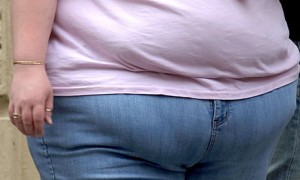 Being overweight or obese isn’t a cosmetic problem. These conditions greatly raise your risk for other health problems.
Being overweight or obese isn’t a cosmetic problem. These conditions greatly raise your risk for other health problems.
Overweight and Obesity-Related Health Problems in Adults:
- Coronary Heart Disease
- High Blood Pressure
- Stroke
- Type 2 Diabetes
- Abnormal Blood Fats
- Metabolic Syndrome
- Cancer
- Osteoarthritis
- Sleep Apnea
- Obesity Hypoventilation Syndrome
- Reproductive Problems
- Obesity can cause menstrual issues and infertility in women.
- Gallstones
via What Are the Health Risks of Overweight and Obesity? – NHLBI, NIH.
Exercise and Age
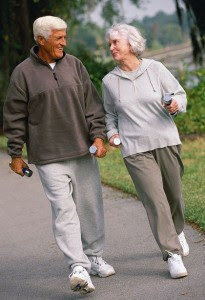 It’s never too late to start exercising. Exercise has benefits at any age.
It’s never too late to start exercising. Exercise has benefits at any age.
Don’t worry if you’ve never exercised, or if you stopped exercising for some reason. Being physically active can help you continue to do the things you enjoy and stay independent as you age. In addition, the right kind of regular exercise can reduce your chance of heart disease, diabetes, and falls.
An effective exercise program needs to be fun and keep you motivated. It helps to have a goal. Your goal might be:
- Manage a health condition
- Reduce stress
- Improve your stamina
- Be able to buy clothes in a smaller size
Your exercise program also may be a way for you to socialize. Taking exercise classes or exercising with a friend are both good ways to be social.
You may have a hard time starting an exercise routine. Once you do start, though, you will begin to notice the benefits, including improved sleep and self-esteem.
Exercise and physical activity can also:
- Improve or maintain your strength and fitness
- Make it easier to do the things you want to do
- Help your balance and walking
- Help with feelings of depression or anxiety and improve your mood
- Maintain your thinking skills (cognitive function) as you get older
- Prevent or treat diseases such as diabetes, heart disease, high blood pressure, breast and colon cancer, and osteoporosis
Always talk to your health care provider before starting an exercise program.
What Is COPD?
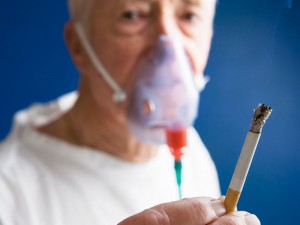 COPD, or chronic obstructive pulmonary PULL-mun-ary disease, is a progressive disease that makes it hard to breathe. “Progressive” means the disease gets worse over time. COPD can cause coughing that produces large amounts of mucus a slimy substance, wheezing, shortness of breath, chest tightness, and other symptoms. Cigarette smoking is the leading cause of COPD. Most people who have COPD smoke or used to smoke. Long-term exposure to other lung irritants—such as air pollution, chemical fumes, or dust—also may contribute to COPD.
COPD, or chronic obstructive pulmonary PULL-mun-ary disease, is a progressive disease that makes it hard to breathe. “Progressive” means the disease gets worse over time. COPD can cause coughing that produces large amounts of mucus a slimy substance, wheezing, shortness of breath, chest tightness, and other symptoms. Cigarette smoking is the leading cause of COPD. Most people who have COPD smoke or used to smoke. Long-term exposure to other lung irritants—such as air pollution, chemical fumes, or dust—also may contribute to COPD.
Recognizing the Signs of Depression
 It isn’t always easy to tell when normal reactions to difficult situations (grief, sadness, etc.) have crossed the line towards clinical depression that needs treatment. However, the number of signs or symptoms you are experiencing, along with the duration and frequency you have them are all important. You are probably dealing with clinical depression (which warrants a visit to your doctor for evaluation) if you have experienced 5 or more of the following symptoms (and at least one of them is among the first two listed), nearly every day for two weeks or more:
It isn’t always easy to tell when normal reactions to difficult situations (grief, sadness, etc.) have crossed the line towards clinical depression that needs treatment. However, the number of signs or symptoms you are experiencing, along with the duration and frequency you have them are all important. You are probably dealing with clinical depression (which warrants a visit to your doctor for evaluation) if you have experienced 5 or more of the following symptoms (and at least one of them is among the first two listed), nearly every day for two weeks or more:
- Loss of interest in things you normally enjoy
- Feeling down, depressed, or hopeless
- Thoughts of death or suicide
- Feeling worthless or guilty
- Problems falling asleep, staying asleep, waking too early or sleeping too much
- Unexplained decrease or increase in appetite, resulting in weight gain or loss within the last month.
- Trouble thinking, concentrating, remembering, and making decisions
- Extreme tiredness or lack of energy that interferes with your ability to work or take care of your daily responsibilities
- Feeling restless, unable to sit still, or abnormally slow when moving
Serving Sizes and Portions
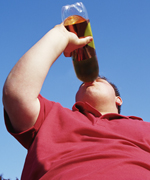 A portion is the amount of food that you choose to eat for a meal or snack. It can be big or small—you decide.
A portion is the amount of food that you choose to eat for a meal or snack. It can be big or small—you decide.
A serving is a measured amount of food or drink, such as one slice of bread or one cup (eight ounces) of milk.
Many foods that come as a single portion actually contain multiple servings. The Nutrition Facts label on packaged foods—on the backs of cans, sides of boxes, etc.— tells you the number of servings in the container.
For example, look at the label of a 20-ounce soda (usually consumed as one portion). It has 2.5 servings in it. A 3-ounce bag of chips, which some would consider a single portion, contains 3 servings.
How to Start Running Safely
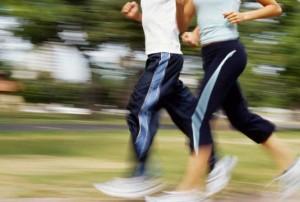 If all the benefits of cardio have you wanting to start running, here are some tips for you to follow so you can start your new pastime safely.
If all the benefits of cardio have you wanting to start running, here are some tips for you to follow so you can start your new pastime safely.
- Get the OK. Check with your doctor if you are new to running or exercise, or if you have any health problems, to make sure you are fine to start.
- Invest in the right shoes. Dressing the part doesn’t just come down to wearing the cutest attire. Make sure you buy the right shoes; don’t go for looks, but go for support and long-lasting materials that cushion. Quality running shoes may not be cheap, but they’ll help prevent injuries and make running that much more enjoyable. Here’s what to expect when buying the right running shoe.
- Start slow. It’s OK to walk — don’t think you have to power through a whole mile when you first start. Starting slow helps keep you from getting overuse injuries. Instead, use a walk/run strategy: run for five to 10 seconds every minute, and gradually shift the ratio as you become stronger. Also, try to set a few goals (like these small minigoals for beginning runners) to conquer to keep you interested and motivated.
- Fuel up correctly. Make sure you’re eating the right foods to prevent an upset stomach or feeling weak. Eat a mix of proteins and carbs about 30 minutes before a run, and make sure it’s light so you don’t feel sluggish and get cramps. Read more tips on what to eat before a run here.
- Warm up and cool down. Don’t force muscles to work without warming them up first. Briskly walk or jog before you start running to prevent pulls and strains. And make sure you cool down after a run; slow down to a jog and stretch your leg muscles.
